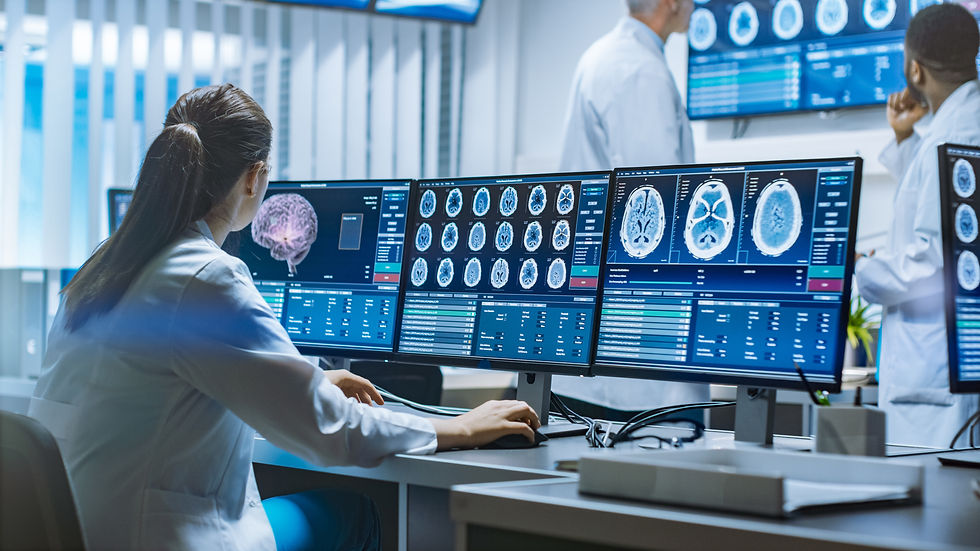Environmental Nanotechnology for Water Purification: A Quantum Leap in Clean Water Solutions
- Satyanarayana Swamy Vyshnava

- Jun 15, 2024
- 4 min read
Clean water is a fundamental human need, yet millions of people worldwide lack access to safe drinking water. Contaminated water sources pose severe health risks, making the search for effective purification methods critical. Enter nanotechnology—a revolutionary field that is transforming water purification through the use of nanomaterials. This blog post explores the innovative applications of nanotechnology in water purification, providing insights for both common readers and research graduate students.
"Nanotechnology offers an unparalleled opportunity to address global water purification challenges, turning scientific innovation into sustainable solutions for clean water."

The Importance of Clean Water and the Role of Nanotechnology
Access to clean water is essential for health, economic development, and environmental sustainability. Traditional water purification methods often fall short in removing all contaminants, leading to the search for more effective solutions. Nanotechnology, which involves manipulating materials at the nanoscale, offers promising advancements in water treatment by targeting contaminants with high precision.
Innovations in Nanotechnology for Water Purification
Nanotechnology enables the development of advanced materials and methods that significantly improve the efficiency and effectiveness of water purification processes. Here are some key innovations:
Nanosorbents: Nanosorbents are nanomaterials designed to adsorb and remove contaminants from water. Due to their high surface area and reactivity, nanosorbents can effectively capture heavy metals, organic compounds, and pathogens. For instance, nano-iron oxide and carbon nanotubes have shown great promise in removing arsenic and lead from contaminated water sources (Theron, Walker, & Cloete, 2008).
Nanocatalysts: Nanocatalysts facilitate chemical reactions that degrade pollutants in water. Titanium dioxide (TiO2) nanoparticles, for example, are used in photocatalytic processes to break down organic pollutants when exposed to light. This method is highly efficient in treating wastewater and purifying drinking water (Diallo et al., 2009).
Nanofiltration Membranes: Nanofiltration membranes are designed with nanoscale pores that selectively filter out contaminants while allowing water molecules to pass through. These membranes are particularly effective in removing bacteria, viruses, and dissolved salts, making them ideal for desalination and wastewater treatment. The smooth interior of carbon nanotube membranes enhances water flow and reduces fouling (Valli, Tijoriwala, & Mahapatra, 2010).
Bioactive Nanoparticles: Bioactive nanoparticles are engineered to inactivate pathogens in water. Silver nanoparticles, known for their antimicrobial properties, are used to disinfect water by killing bacteria and viruses. These nanoparticles can be incorporated into filters and coatings, providing continuous disinfection and reducing the need for chemical treatments (Ahmed et al., 2014).
Real-World Applications and Case Studies
Arsenic Removal in Bangladesh: In Bangladesh, where groundwater contamination with arsenic is a severe issue, researchers have successfully implemented iron oxide nanoparticles to remove arsenic from drinking water. This solution has significantly reduced the incidence of arsenic poisoning in affected communities (Savage & Diallo, 2005).
Desalination Plants: Desalination plants in the Middle East are adopting nanofiltration membranes to improve efficiency and reduce energy consumption. These membranes enable the production of fresh water from seawater, addressing water scarcity in arid regions (Suthar & Gao, 2017).
Benefits of Nanotechnology in Water Purification
Increased Efficiency: Nanomaterials offer higher reactivity and surface area, leading to more effective contaminant removal.
Cost-Effectiveness: Many nanotechnology-based methods reduce operational costs and require less energy compared to traditional methods.
Scalability: Nanotechnology solutions can be scaled to address both small-scale and large-scale water purification needs.
Environmental Impact: Reduced use of chemicals and energy contributes to more sustainable water management practices.
Challenges and Future Directions
Despite the promising advancements, there are challenges to the widespread adoption of nanotechnology in water purification. Concerns about the environmental and health impacts of nanomaterials, regulatory hurdles, and the need for further research on long-term effects must be addressed. However, ongoing research and innovation continue to drive the development of safer and more effective nanotechnology applications.
Conclusion for Nanotechnology and Water treatments
Nanotechnology is revolutionizing the field of water purification, offering innovative solutions to some of the most pressing environmental challenges. By harnessing the unique properties of nanomaterials, we can develop more efficient, cost-effective, and sustainable methods for providing clean water. As research progresses, the potential for nanotechnology to transform water treatment and ensure global access to safe drinking water is immense.
"Nanotechnology offers an unparalleled opportunity to address global water purification challenges, turning scientific innovation into sustainable solutions for clean water."
References
Ahmed, T., Imdad, S., Yaldram, K., & Butt, N. M. (2014). Emerging nanotechnology-based methods for water purification: A review. Desalination and Water Treatment, 52, 4089-4101.
Diallo, M., Duncan, J. S., Savage, N., Street, A., & Sustich, R. (2009). Nanotechnology Solutions for Improving Water Quality. Unknown.
Savage, N., & Diallo, M. (2005). Nanomaterials and Water Purification: Opportunities and Challenges. Journal of Nanoparticle Research, 7, 331-342.
Suthar, R. G., & Gao, B. (2017). Nanotechnology for drinking water purification. Unknown.
Theron, J., Walker, J., & Cloete, T. E. (2008). Nanotechnology and Water Treatment: Applications and Emerging Opportunities. Critical Reviews in Microbiology, 34, 43-69.
Valli, F., Tijoriwala, K., & Mahapatra, A. (2010). Nanotechnology for water purification. International Journal of Nuclear Desalination, 4, 49-57
---------------------------------------------------------------------------------------------------------------------------
Disclaimer
The information on www.nanolect.com is for general informational purposes only and provided in good faith without warranties of any kind. While we strive for accuracy, nanobiotechnology is rapidly evolving, and we do not guarantee the completeness or reliability of the content. The opinions expressed are those of the authors and do not reflect NanoLect.com. We are not liable for any actions taken based on our content. Users should verify information from external links. Use of this site indicates acceptance of this disclaimer, which may be updated periodically. Please check our disclaimer policy for more details




Comments